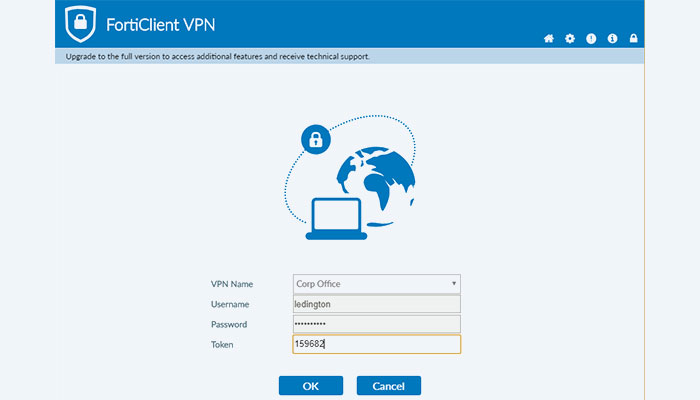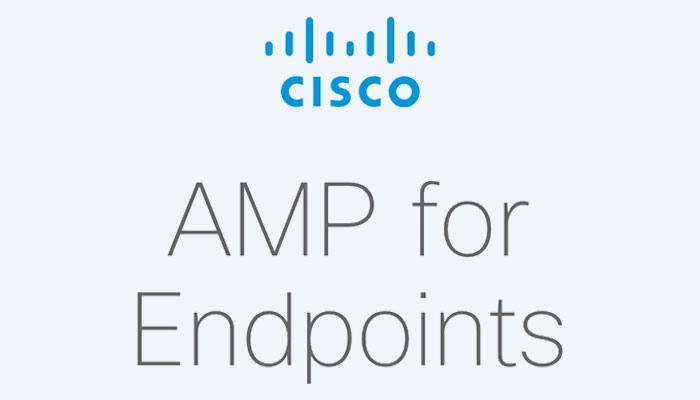FortiClient vs Cisco AMP
In this article, we introduce two solutions from two different companies that can inspire the managers of companies and organizations to maintain network security in different ways. Each of these two companies, in addition to providing network security, can provide managers with many other options to facilitate network management. In the following, we will introduce these two licensed solutions
FortiClient
In order to provide tracking and awareness, compliance enforcement, and reporting, the Fortinet Security Fabric integration between FortiClient and Fortinet’s other products, FortiGate, FortiAnalyzer, EMS, managed APs, managed Switches, and FortiSandbox, provides endpoint visibility through telemetry. Secure remote connectivity is offered by conventional virtual private network (VPN) tunnels or brand-new, automatic ZTNA tunnels. Whether local or remote, offer endpoint security and protection.
FortiClient key features
- FortiGate, FortiClient EMS, and FortiClient Cloud: Simplified Management and Policy Enforcement.
- Universal ZTNA with automatic, encrypted tunnels for managed, session-by-session application access.
- Integrated endpoint features, such as compliance, security, and protection, into a single, flexible, light client.
- FortiGuard and FortiSandbox integration provide advanced threat protection against exploits and advanced malware.
FortiClient key benefits
Security Fabric Integration
Fortinet’s Security Fabric is connected to the endpoints through the licensed FortiClient, allowing for the early identification and mitigation of sophisticated threats.
Automation, compliance control, vulnerability management, and native endpoint visibility are all provided by this integration. To find signs of compromise, FortiOS and FortiAnalyzer use endpoint telemetry intelligence from FortiClient. Administrators can use the automation feature to investigate in real time and set up automated responses, such as quarantining suspect or compromised endpoints, to contain incidents and stop outbreaks. With Fortinet’s endpoint compliance and vulnerability management capabilities, enterprise security policies can be more easily implemented while preventing the easy targeting of endpoints by attackers.
ZTNA universal
Whether a user is local or remote, the licensed FortiClient Universal ZTNA integrates with FortiOS to enable secure granular access to applications. Each session begins with an automatic, encrypted tunnel from FortiClient to the FortiOS ZTNA Application Gateway for user and device authentication. Access is granted for that session after verification. Multifactor authentication is another option for adding an additional layer of security. Organizations get a better remote access solution and a consistent policy for managed application access with Universal ZTNA, regardless of endpoint location.
Control over SAAS and web filtering
By delivering web security and content filtering, the licensed FortiClient offers remote web filtering. The web application firewall offers software as a service (SaaS), web-based applications, and botnet protection in addition to granular application traffic control.
endpoint cleanliness
By scanning for vulnerabilities and providing optional autopatching, FortiClient assists businesses in lowering their attack surface. When used in conjunction with zero trust access principles, this strategy can improve the hygiene and security posture of an organization.
Preventing malware and exploits
The licensed FortiClient Cloud Sandbox prevents the use of sophisticated malware and vulnerabilities by integrating with FortiGuard global threat intelligence. When a file is downloaded to a FortiClient endpoint, FortiClient Cloud Sandbox integrates with it to instantly analyze every file. The cloud-based FortiGuard threat intelligence platform receives information about known and unknown malware from millions of FortiClient and FortiSandbox users around the world. To defend against new threats, FortiGuard automatically shares the intelligence with FortiClient endpoints.
VPN
Flexible options for VPN connectivity are offered by FortiClient. Both SSL and IPsec VPN are supported. Instead of having to go through the corporate VPN headend like in a typical SSL VPN tunnel, the split tunneling feature allows remote users on SSL VPNs to access the Internet. By lowering latency, this feature enhances the user experience.
FortiClient also has safeguards that prevent Internet-based transactions from backflowing into the VPN connection and endangering the corporate network.
With features like autoconnect, always-on VPN, and dynamic VPN gate selection, FortiClient further streamlines the remote user experience in addition to straightforward remote connectivity. Multifactor authentication is another option for adding an extra layer of security.
Protection against ransomware
Attacks using ransomware have grown recently. With the ability to undo changes made by malicious programs and return the endpoint to its pre-infection state, FortiClient has developed new ransomware protection in response.
Adaptable Licensing
Both the traditional device-based licensing and the new user-based FortiTrust licensing are options for accessing FortiClient’s advantages. Customers can choose how they want to subscribe to FortiClient’s benefits with both options, which both offer the same functionality.
Cisco AMP
Security breaches occur daily, and cyber-attacks are a constant threat to organizations. A cloud-managed endpoint security solution called Cisco Advanced Malware Protection (AMP) for Endpoints offers visibility, context, and control. This licensed solution not only stops cyberattacks from happening, but it also quickly detects, contains, and remediates advanced threats if they manage to get past front-line defenses and inside—all before any harm can be done, at a reasonable cost, without degrading operational efficiency.
By providing the most recent global threat intelligence to bolster defenses, an integrated antivirus (AV) engine to detect and block attacks at point-of-entry, an integrated sandboxing technology to analyze unknown files, and proactive protection features that close attack pathways and reduce vulnerabilities, AMP for Endpoints prevents attacks.
However, the licensed Cisco AMP for Endpoints continuously monitors and records all file activity to quickly detect malicious behavior, retrospectively alert security teams, and then provide deep visibility and a detailed recorded history of the malware’s behavior over time—where it came from, where it’s been, and what it’s doing. This is useful if malware manages to evade these preventative measures and gets inside. The threat can then be automatically contained and eliminated using AMP. Endpoints running Windows, Mac OS, Linux, Android, and iOS, including laptops, workstations, servers, and mobile devices, are protected by the licensed Cisco AMP.
Cisco AMP key features
- Cisco AMP for Endpoints offers protection that goes beyond just thwarting attacks. Ongoing traffic and file analysis is performed. Retrospective security is made possible thanks to this capability. To comprehend the full extent of an infection, identify its underlying causes, and carry out remediation, you can look back in time and trace processes, file activities, and communications. As a result, your organization will be better protected in terms of effectiveness, efficiency, and reach.
- Cisco AMP for Endpoints provides monitoring that provides unmatched visibility in addition to retrospection. It brings intelligence to a new level by connecting and connecting different types of retrospection into a lineage of activity that can be analyzed in real time. After that, it can search for patterns of malicious behavior on a single endpoint or throughout an environment of endpoints.
- Advanced behavioral detection capabilities of Cisco AMP for Endpoints deliver a prioritized and compiled view of the top areas of compromise and risk. This type of analysis looks at behaviors over time.
- Investigation that transforms the hunted into the hunter: Cisco AMP for Endpoints refocuses activity from a general search for breaches based on hypothetical events like malware detections and behavioral indications of compromise (IoCs) to a focused hunt for breaches based on actual events like IoCs.
- True simplicity in containment: Cisco AMP for Endpoints offers context and visibility into the sequence of events to complement its dashboards and trajectory views. Targeting particular programs, files, malware, and other root causes is possible with AMP. It is quick and simple to break the chain of attacks.



